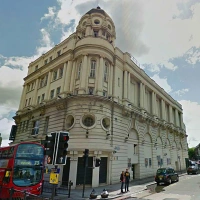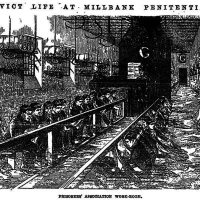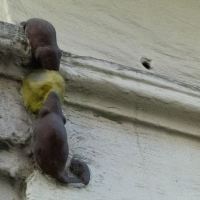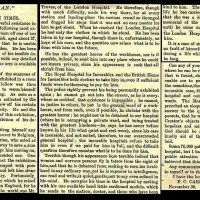The Christmas Truce, December 24th 1914
In early January 1915 and with conflict raging in Europe, The Illustrated London News carried the following cover depicting a moving scene in which a German soldier, in a brave gesture of peace, approaches British troops with a little, lit tree on Christmas Eve.
Drawn by an artist on the frontline, the image was accompanied by the following caption:
“On some sections of the battle-front the Germans decorated their trenches with Christmas-trees and paper lanterns, and invited our troops to stop shooting and come over to smoke and have a palaver. With one accord a truce for the night was arranged, and the compliments of the season were passed with much enthusiasm between friend and foe.
The cessation of hostilities continued all the next day. Both sides fraternised and spent a Happy Christmas.”
Another image from the same issue depicted German and British troops swapping headgear and enjoying a good laugh and smoke together:
Although it may sound tenuous of me to say, these are stories and images which I can relate to.
As a London Cabbie, I have the pleasure of meeting passengers from all over the world; people from a vast array of creeds, races and backgrounds…. and the one thing which always shines through is humanity; the ability of most people, no matter where they’re from, to display friendliness, a polite nature and a good sense of humour.
Peace to you all & a very merry Christmas
WWI 100: London’s Memorials… The London Troop Monument
The London Troops Monument
The Royal Exchange
It is estimated that around 900,000 men from London fought in the Great War, approximately 300,000 of who were killed or injured.
Standing outside the Royal Exchange in the heart of the financial district, the ‘London Memorial’ lists all of the regiments from the capital involved in the horrendous conflict and commemorates the countless Londoners who lost their lives.
The memorial’s Portland stone plinth was designed by the then President of the Royal Academy, Sir Aston Webb (who was also responsible for Admiralty Arch and the Queen Victoria Memorial outside Buckingham Palace), whilst the two figures standing either side were created by Alfred Drury.
The memorial is topped with a small lion, bearing a shield adorned with St George and the Dragon.
The memorial is Sir Aston Webb’s second design– his first idea was quite different, consisting of two 75 ft. tall flag poles at the base of which would have been statues of Victory and Peace.
Costing £7,000 (around £150,000 in today’s money), the monument was funded by public donations.
In order to make room for the memorial, a fountain topped by a statue of Temperance- which had been on the site since 1861 after being presented by the philanthropist, Samuel Gurney, required removal. It was relocated and can be seen today at the northern end of Blackfriars Bridge.

The fountain at Blackfriars which once stood outside the Royal Exchange and was relocated to make way for the London Memorial (image: Geograph)
The London Troops Memorial was unveiled in foggy conditions on the afternoon of the 12th November 1920 by the Duke of York who was accompanied by the Lord Mayor and the Bishop of London.
The Duke of Connaught (the King’s Uncle) was also due to participate but had to bow out due to bronchitis. He sent a telegram which was read out at the ceremony;
“While deeply regretting that I cannot unveil the memorial to London’s splendid soldiers, my thoughts and feelings are with you at today’s interesting occasion and I hope the memorial will always recall the gallant services rendered by London’s sons…”


























